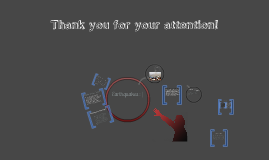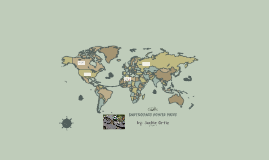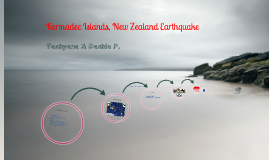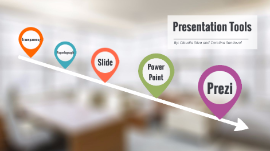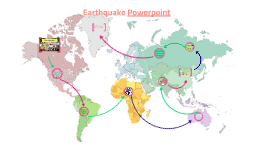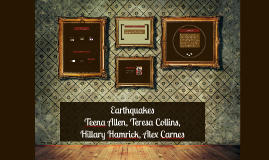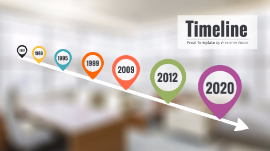Earthquakes
Transcript: Surface Waves 2 types One type produces motion up, down, and around The other produces back-and-forth motion Primary waves are also known as P-waves. Primary waves come first and are the fastest Move in a back-and-forth direction Seismograh Data Primary Waves Summary Primary Waves The Richter Magnitude Scale Used to measure the strength of an earthquake Created by Charles Richter in the 1930’s Magnitude – A measure of the strength of an earthquake Mercalli Intensity Scale - intensity – a measure of the degree to which an earthquake is felt by people and the amount of damage cased by the earthquake Measuring Earthquake Strength and Intensity Primary Waves Secondary waves are also known as S-waves. These waves come after P-waves. Move in a side-to-side direction Free powerpoint template: www.brainybetty.com Free powerpoint template: www.brainybetty.com Earthquakes The students learned about how earthquakes are predicted, how to be prepared for an earthquake, and the effects that earthquakes have on buildings. Surface Waves Day 2 Primary waves are also known as P-waves. Primary waves come first and are the fastest Move in a back-and-forth direction P-waves, S-waves and Surface Waves Epicenter – the point on the Earth’s surface directly above an earthquake’s starting point or focus Focus – the point along a fault at which the first motion of an earthquake occurs Day 1 What are P-waves, S-waves, and surface waves? 2 types One type produces motion up, down, and around The other produces back-and-forth motion Secondary waves are also known as S-waves. These waves come after P-waves. Move in a side-to-side direction Free powerpoint template: www.brainybetty.com Free powerpoint template: www.brainybetty.com Artifacts Measuring Earthquake Strength and Intensity Secondary waves are also known as S-waves. These waves come after P-waves. Move in a side-to-side direction Time and Location of Earthquakes Secondary Waves Secondary waves are also known as S-waves. These waves come after P-waves. Move in a side-to-side direction During our earthquake unit, our students learned about P-Waves, S-waves and surface waves. They explored how waves travel, how scientist study earthquake motion, and how to stay safe during an earthquake. In the event of an earthquake, our students are prepared to take appropriate safety precautions! 2 types One type produces motion up, down, and around The other produces back-and-forth motion Secondary waves are also known as S-waves. These waves come after P-waves. Move in a side-to-side direction Secondary waves are also known as S-waves. These waves come after P-waves. Move in a side-to-side direction Primary waves are also known as P-waves. Primary waves come first and are the fastest Move in a back-and-forth direction Day 3 2 types One type produces motion up, down, and around The other produces back-and-forth motion Free powerpoint template: www.brainybetty.com Our purpose for this mini-unit was to teach the children about how earthquakes happen, how earthquakes are measured and classified, and how to stay safe during an earthquake. Purpose Primary Waves Secondary Waves A tracing of earthquake motion that is created by a seismograph Free powerpoint template: www.brainybetty.com Surface Waves Free powerpoint template: www.brainybetty.com 2 types One type produces motion up, down, and around The other produces back-and-forth motion Earthquakes Teena Allen, Teresa Collins, Hillary Hamrick, Alex Carnes Secondary Waves






